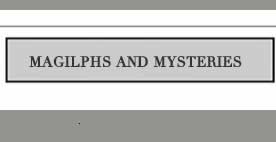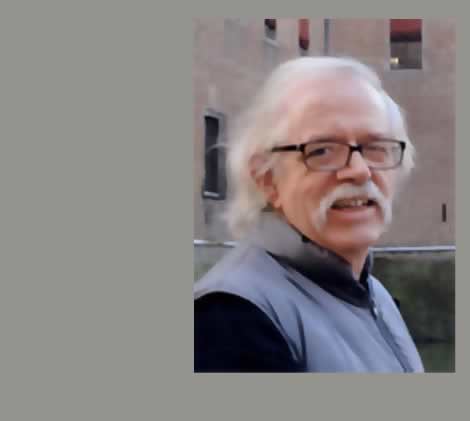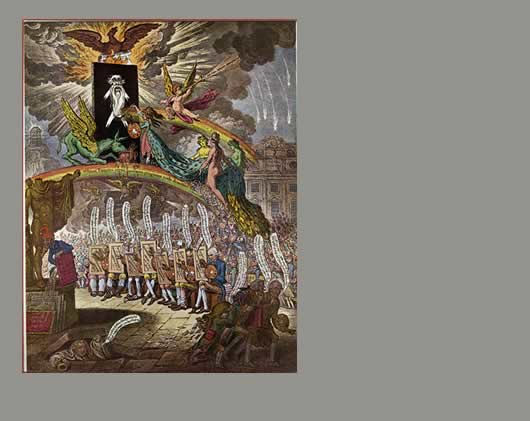 |
 |
 |
||
 |
 |
|||
RESEARCH GUIDE
| MUNICH, ZWEI JAHREHUNDERTE ENGLISCHE MALEREI |
![]()
| EXHIBITION CATALOGUE, A DECADE OF ENGLISH NATURALISM 1810-1820 |
![]()
| EXHIBITION CATALOGUE, The Diaghilev Ballet in England 1979, Norfolk and Norwich Triennial Festival , Corrigenda and specimen pages |
| EXHIBITION CATALOGUE, The Diaghilev Ballet in England 1979, Norfolk and Norwich Triennial Festival ,more scans |
![]()
| SEURAT, TECHNIQUE A REAPPRAISAL ; SEURAT'S SILENCE |
![]()
| COLOUR AND MEANING |
![]()
| COLOUR AND CULTURE |
![]()
| COLOUR IN TURNER |
![]()
| COLOUR IN ART , World of Art series |
![]()
| GEORGE FIELD, WALPOLE SOCIETY 2001 |
![]()
| TURNER'S RAIN STEAM AND SPEED, Art in Context |
![]()
| TURNER AND WATERCOLOUR for the ACGB 1974 exhibition catalogue |
![]()
| CONSTABLE, GRAND PALAIS, "Le Paysage est ma maitresse" essay 2002 |
![]()
| CONSTABLE, GREAT LANDSCAPES, TATE |
![]()
| CONSTABLE, NATIONAL GALLERY OF ART AUSTRALIA LAND SKY SEA (CO-CURATOR) |
![]()
| P.W.STEER, exhib review Turner studies Vol 6 no 1 (1) |
Memories from CM
![]() ALEX POTTS'S OBITUARY IN THE GUARDIAN
ALEX POTTS'S OBITUARY IN THE GUARDIAN
For the first year of studies in the new School of Fine Arts and Music we were supervised by Peter Lasko and Andrew Martindale. The medieval pitch lessened the next year when John Gage and Alastair Grieve were appointed. Whereas the latter was clear and conscientious as a lecturer John was puckish and wore his learning lightly. Even though I found myself being drawn towards the Victorian and learning so much from Alastair , I realised that John’s lectures were more challenging, mysterious and fun. Often obscure with swathes of untranslated German, they nevertheless dazzled and annoyed in equal measure. Other lectures over my six years there were pedestrian in comparison. I went to John's lecture on David Wilkie and British Genre painting three times, once when I was a postgraduate. And he remembered previous attendances, commenting that he would thought I could have got it the first time. But it's different every time, John. He was both accessible and disengaged from my fellow students, amused by the palpable social division of the first cohort of students. If his sonorous and slightly affected accent initially implied a public public school/Oxbridge background, it was clear he had emerged from the same Grammar School background as I had, made clearer when I met his mother in later years. His vocal range was rich but containing a seismic stutter which began with a vast intake of breath which caused him to tilt his head back, followed by a furious repetition of a single recalcitrant letter, a P and a R. Certain words , it was perfectly possible to anticipate in his lectures, were well worth waiting for – 'Physiognomy' was one word that caused problems, and with which his whole body wrestled. The name of the German Romantic artist Philip Otto Runge provided a sequence of hazards stretched along John's lectures, like fences along the Grand National. His students goaded him by mispronouncing this artist’s name in seminars, with a soft G, to rhyme with Plunge. He was censorious the first time we did it, but realised on repetition that we were winding him up, something I doubt he had encountered before his arrival at UEA. My first paper for him was an account of the Norwich Society, the infrastructure of support and encouragement for artists in the city. I had misheard the title. He had intended me to write on the Norwich School. Much better, he said. Glad you got it wrong. I had explored the unique collection of exhibition catalogues in the Norwich Central Library and found real human drama in the machinations. This suited me more than the usual aspects of connoisseurship I assumed was required. In those early years at the University of East Anglia, it was part of what made John different and refreshing. We learnt to conceal how entertaining we found his delivery, and then he genially accepted our amusement, laced as it was respect for his contribution to what Art History could be. To a dogged form of Morellian scholarship that we associated with the Courtauld Institute , a close scrutiny, say, of painted ear lobes for attribution in the service of commercial galleries, he added the colour and fizz of ideas, encouraging speculation as a form of spectacle, encouraging the outlandish and the plain dotty. Much of what he was remained a mystery until I knew him better. He arrived to teach on a small frail motor bike on the days of his attendance, a greasy haversack containing his slides and lecture notes. Occasionally Oriole and I would go over for tea with John and Pen, and later Charlie. He occupied a rambling manse lent him by Robin Walpole which John had undertaken to repair. The progress was desultory at best. We always wore several layers to protect us from the draughts and the chill. His contacts with what was fresh and new in Europe enriched our undergraduate course. He invited the young Caspar David Friedrich scholar Helmut Börsch-Supan to talk to us. After a generous lunch in Norwich they returned to the lecture theatre, Helmut to deliver his lecture in German, John to translate. The results were riveting, although at one stage a much amused translator believed that the speaker had begun an extended discourse on the cut of his trousers. "I'll get Helmut to repeat that." After I left University and plied my trade in Britain's Art Schools, he kept in touch and pushed several jobs my way, such as a review for the TLS of Christopher Newall's tedious tome on Fred Leighton (1990) In 1980 he had done a show with Michael Kitson, Will Vaughan and others for the Haus der Kunst Munich called ZWEI JAHREHUNDERTE ENGLISCHE MALEREI. I helped with the catalogue entries for John's 'Sind Briten Hier?' section. I read hundreds of travel diaries and was particularly struck by the correspondence between the artist's choice of vista and the preferences expressed by the published guides. He was much struck by my thought that Turner exhibited two paintings of Venice in the same year, depicting the beginnings of the city at the Custome House, to itsits demise with the canvas of the cities' cemetaries. He insisted my 'apercus' be included in the Turner catalogue raisonée, much to my satisfaction. Most conspicuously he roped me in for the catalogue introduction and entries of the 1974 show of G.F.Watts at the Whitechapel where Wilfrid Blunt ticked me off about my slapdash punctuation. John enjoyed those moments of tension in his campaigns. He was rather highhanded in dealing with the Curator Jenny Stein who at one stage ticked him off for his lordly attitude. "I am NOT one of your students, John." she said firmly. In the years after we left Norwich John would call in to our Brighton house on his way to the Continent, latterly en route for his Tuscan villa, a conversion in progress. "It's in an incomplete state, no electricity, no water, just a well." Once he stayed here to be placed conveniently for an interview for a job at the University of Sussex (Tom Crowe got the job- perhaps they rumbled the sheer convenience of living this close to Newhaven). We had heard nothing from him for a long time. I heard he had worked with Lucien Freud choosing Constable works for the Louvre in 2002, and I was longing to hear more. That morning in February this year (2012) I opened the newspaper at the Obituary section and the large reproduction of Turner's Rain Steam and Speed warned me to expect the worst. He had died at a hospice in Cambridge it seemed. I checked the obituaries, including Alec Potts' piece which articulated John's contribution to the trade of Art History. John House who also taught at the University of East Anglia had died the previous week so I was glad to get through to lunch that day. Above all I remembered the wit and mystery of the man. He had been involved in some clandestine work in Germany during the Cold War, something about getting East Germans into West Berlin. Anything was possible. He had such a delight in the Absurd, and I remember his delight to hear of a Victorian periodical called Once a Week. He relished the double entendre. Yesterday I bought a copy of Draper Hill's Fashionable Contrasts, and by post, the Gage Colour book I never read (Colour and Meaning 2000) arrived which contained the first of his articles I ever read, 'Magilphs and Mysteries', from an issue of APOLLO. John was only allowed a black and white reproduction by Thames & Hudson, so here, my dear friend, is a large colour image for your delight. Much Love, Chris.
|
